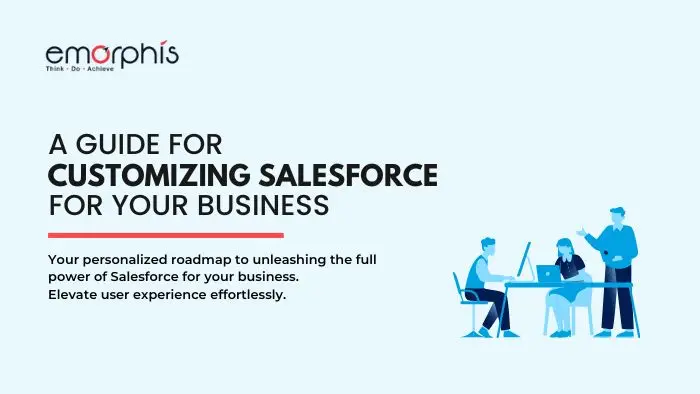 Launch apps instantly. Claim $200 credits on DigitalOcean
Launch apps instantly. Claim $200 credits on DigitalOcean
Types of Salesforce Customization
Written by Harry Johnson » Updated on: March 12th, 2024

Salesforce customization is a powerful way to tailor the CRM platform to meet the specific needs of your business. Several types of customization can be applied to Salesforce, each with its own advantages and use cases.
Before diving in, check out our comprehensive guide on customizing Salesforce.

Need of Salesforce Customization?
The need for Salesforce customization arises from the desire to align the CRM platform closely with a business's unique processes, goals, and user preferences. Customization allows for the tailoring of Salesforce to fit specific business requirements, enhancing efficiency and user adoption.
By modifying fields, workflows, and user interfaces, and integrating with other systems, businesses can ensure that Salesforce effectively supports their sales, marketing, and customer service efforts. This leads to improved data management, streamlined operations, and better decision-making. Additionally, customization enables the creation of personalized experiences for users, increasing satisfaction and productivity.
Overall, Salesforce customization is essential for businesses looking to fully leverage the capabilities of the CRM platform and achieve a competitive advantage in their respective industries.
Here are the main types of Salesforce Customization
Declarative Customization
This type of customization involves using Salesforce's built-in tools and features to modify the platform without writing any code. It includes creating custom fields, objects, workflows, validation rules, and reports. Declarative customization is user-friendly and suitable for making quick changes to adapt to business needs.
For example, a business can create a custom field in the Opportunity object to track the estimated close date of a deal, enabling sales teams to better manage their pipelines and forecast revenue.
Code-based Customization
When the built-in tools are not enough to meet specific requirements, code-based customization comes into play. This involves using Apex, Salesforce's proprietary programming language, and Visualforce, a framework for building custom user interfaces. Code-based customization allows for more complex and sophisticated modifications, such as creating custom logic, triggers, and integrations.
An example of this is creating a trigger in Apex that automatically updates the status of related records when a specific condition is met, such as changing the status of all associated tasks to "Completed" when a project is marked as "Finished."
Integration
Salesforce can be integrated with other systems and applications to create a seamless ecosystem. This type of customization involves using APIs and middleware to connect Salesforce with external systems, such as ERP, marketing automation tools, or custom applications. Integration enables data synchronization and provides a unified view of customer information across different platforms.
For instance, a company might integrate Salesforce with their ERP system using APIs to synchronize customer data between the two systems, ensuring that sales teams have access to up-to-date inventory levels and order history when interacting with customers.
Conclusion
Salesforce customization offers many possibilities to tailor the platform to your business needs. Whether it's through declarative customization, code-based customization, integration, or other methods, the flexibility of Salesforce allows for endless customization options.
To successfully implement these customizations, it's often beneficial to work with a Salesforce implementation services provider who can guide you through the process and ensure that your Salesforce environment is optimized for your business requirements.
Also, check out - Salesforce Customization: Your Roadmap to Unlocking Efficiency
Copyright © 2024 IndiBlogHub.com Hosted on Digital Ocean








Post a Comment
To leave a comment, please Login or Register